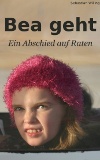I recently decided to prefer MongoDB for new projects and it turned out that I still need to learn a lot of things about it. One of them is MapReduce which is more powerful than (most) SQL SELECT options.
Suchergebnisse für „mongodb“
The YAWF framework is available from CPAN, but it still needs a Webserver and some environment for working at it's best. This tutorial shows everything needed to set up a new OpenVZ VE (VServer) with MongoDB and YAWF framework on an existing OpenVZ host.
This second part will finish the job by putting some useful code into the skeleton methods.
Today I'ld like to show you how easy a has could be connected to a database. A module which connects a hash to SQL is already on CPAN, so let's go with MongoDB.
A lot of bugs have been fixed, some minor, some major and many new tests have been added.
The new version supports grouping of (top level) keys:
use YAWF::Object::MongoDB ( keys => [ { birch => 1, oak => 1, color => 1, }, { deer => 1, boar => 1, color => 1, },]);This will push birch, oak and color in one group (group 0) and deer, boar and color in another group (group 1).
While fetching a document out of the database using ->new(), all the keys from group 0 will be fetched. Accessing one of the keys from another group (1 or higher) will add all the keys from their group(s). "color" is part of two groups, it will be fetched if either group is being requested.
Accessing any undefined key using get_column() will download the whole database document.
This is very new and even if a test script is there and it passes, there might be bugs and issues. Grouping isn't currently part of the POD documentation and using ->list will still ignore it. Please test it and comment and once I consider it to be some kind of "stable", I'll add it to POD.
Mein Wrapper-Modul YAWF::Object::MongoDB ist bereits auf CPAN und sollte in den nächsten Stunden auch im Index verfügbar sein.


